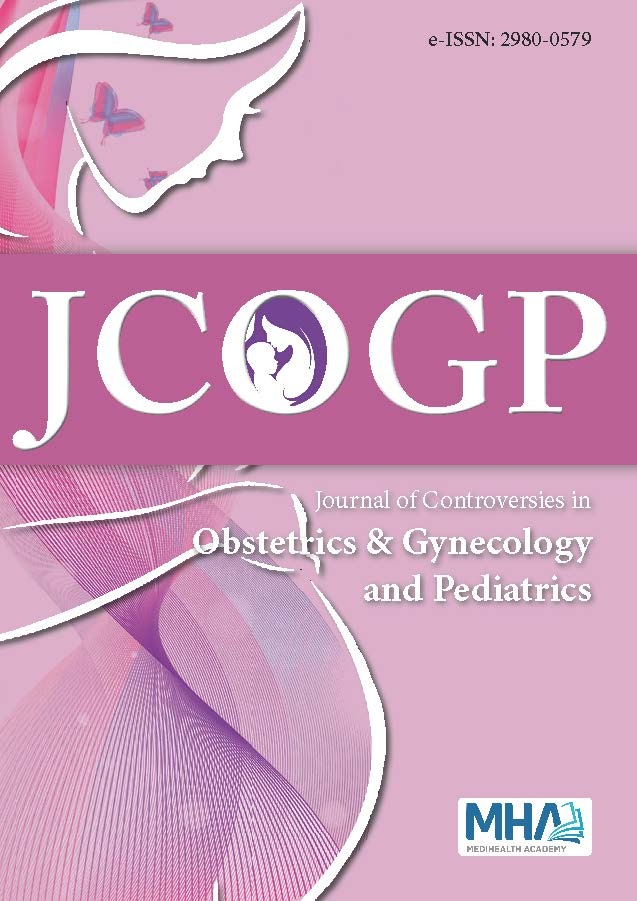1. Burton GJ, Jauniaux E. Pathophysiology of placental-derived fetalgrowth restriction. Am J Obstet Gynecol. 2018;218(2):S745-S761. doi:10.1016/j.ajog.2017.11.577
2. Audette MC, Kingdom JC. Screening for fetal growth restriction andplacental insufficiency. Semin Fetal Neonatal Med. 2018;23(2):119-125.doi: 10.1016/j.siny.2017.11.004
3. Gordijn SJ, Beune IM, Thilaganathan B, et al. Consensus definitionof fetal growth restriction: a Delphi procedure: Consensus definitionof FGR. Ultrasound Obstet Gynecol. 2016;48(3):333-339. doi: 10.1002/uog.15884
4. Unterscheider J, Daly S, Geary MP, et al. Optimizing the definition ofintrauterine growth restriction: The multicenter prospective PORTOStudy. Am J Obstet Gynecol. 2013;208(4):290.e1-290.e6. doi: 10.1016/j.ajog.2013.02.007
5. Du H, Zhao J, Hai L, Wu J, Yi H, Shi Y. The roles of vasohibin and itsfamily members: beyond angiogenesis modulators. Cancer Biol Ther.2017;18(11):827-832. doi: 10.1080/15384047.2017.1373217
6. Sonoda H, Ohta H, Watanabe K, Yamashita H, Kimura H, Sato Y.Multiple processing forms and their biological activities of a novelangiogenesis inhibitor vasohibin. Biochem Biophys Res Commun.2006;342(2):640-646. doi: 10.1016/j.bbrc.2006.01.185
7. Sato Y, Sonoda H. The vasohibin family: a negative regulatorysystem of angiogenesis genetically programmed in endothelial cells.Arterioscler Thromb Vasc Biol. 2007;27(1):37-41. doi: 10.1161/01.ATV.0000252062.48280.61
8. Sato Y. The vasohibin family: a novel family for angiogenesis regulation.J Biochem. 2013;153(1):5-11. doi:10.1093/jb/mvs128
9. Shimizu K, Watanabe K, Yamashita H, et al. Gene regulation of a novelangiogenesis inhibitor, vasohibin, in endothelial cells. Biochem BiophysRes Commun. 2005;327(3):700-706. doi: 10.1016/j.bbrc.2004.12.073
10. Kimura H, Miyashita H, Suzuki Y, et al. Distinctive localizationand opposed roles of vasohibin-1 and vasohibin-2 in the regulationof angiogenesis. Blood. 2009;113(19):4810-4818. doi: 10.1182/blood-2008-07-170316
11. Suenaga K, Kitahara S, Suzuki Y, et al. Role of the vasohibin family inthe regulation of fetoplacental vascularization and syncytiotrophoblastformation. PLoS One. 2014;9(9):e104728. doi: 10.1371/journal.pone.0104728
12. Lees CC, Stampalija T, Baschat AA, et al. ISUOG practice guidelines:diagnosis and management of small-for-gestational-age fetus and fetalgrowth restriction. Ultrasound Obstet Gynecol. 2020;56(2):298-312. doi:10.1002/uog.22134
13. Reynolds LP, Borowicz PP, Caton JS, Crouse MS, Dahlen CR, WardAK. Developmental programming of fetal growth and development.Vet Clin North Am Food Anim Pract. 2019;35(2):229-247. doi: 10.1016/j.cvfa.2019.02.006
14. Sun C, Groom KM, Oyston C, Chamley LW, Clark AR, James JL. Theplacenta in fetal growth restriction: what is going wrong? Placenta.2020;96:10-18. doi:10.1016/j.placenta.2020.05.003
15. Hu M, Li J, Baker PN, Tong C. Revisiting preeclampsia: a metabolicdisorder of the placenta. FEBS J. 2022;289(2):336-354. doi: 10.1111/febs.15745
16. Dessì A, Pravettoni C, Cesare Marincola F, Schirru A, Fanos V. Thebiomarkers of fetal growth in intrauterine growth retardation andlarge for gestational age cases: from adipocytokines to a metabolomicall-in-one tool. Expert Rev Proteomics. 2015;12(3):309-316. doi:10.1586/14789450.2015.1034694
17. Burton GJ, Fowden AL. The placenta: a multifaceted, transient organ.Philos Trans R Soc B Biol Sci. 2015;370(1663):20140066. doi: 10.1098/rstb.2014.0066
18. Burton GJ, Charnock-Jones DS, Jauniaux E. Regulation of vasculargrowth and function in the human placenta. Reproduction.2009;138(6):895-902. doi: 10.1530/REP-09-0092
19. Clark D, Smith S, Licence D, Evans A, Charnock-Jones D. Comparisonof expression patterns for placenta growth factor, vascular endothelialgrowth factor (VEGF), VEGF-B and VEGF-C in the human placentathroughout gestation. J Endocrinol. 1998;159(3):459-467. doi: 10.1677/joe.0.1590459
20. Watanabe K, Hasegawa Y, Yamashita H, et al. Vasohibin as anendothelium-derived negative feedback regulator of angiogenesis. JClin Invest. 2004;114(7):898-907. doi: 10.1172/JCI200421152
21. Shibuya T, Watanabe K, Yamashita H, et al. Isolation andcharacterization of vasohibin-2 as a homologue of VEGF-inducible endothelium-derived angiogenesis inhibitor vasohibin.Arterioscler Thromb Vasc Biol. 2006;26(5):1051-1057. doi: 10.1161/01.ATV.0000216747.66660.26
22. Farina A, Morano D, Arcelli D, et al. Gene expression in chorionicvillous samples at 11 weeks of gestation in women who developpreeclampsia later in pregnancy: implications for screening. PrenatDiagn. 2009;29(11):1038-1044. doi: 10.1002/pd.2344
23. Liang Y, Wang F, Chen G, Lu W, Zhang Y. Vasohibin 1, a clinicallyrelevant biomarker, contributes to pre-eclampsia. Int J Clin Pract.2021;75(5):e14017. doi: 10.1111/ijcp.14017

